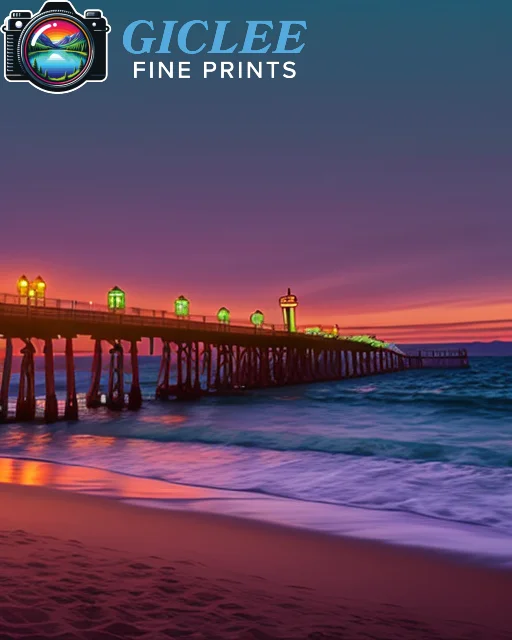
For art lovers, collectors, and artists alike, understanding the difference between art prints and art reproductions is key when it comes to purchasing or creating artwork. Although these terms are often used interchangeably, they represent distinct processes that can affect the value, authenticity, and presentation of a piece. At Giclee Fine Prints, we specialize in both art printing and art reproductions, helping artists and collectors make informed choices.
What Is an Art Print?
An art print refers to a high-quality print created as an original work of art in collaboration with the artist. These prints are typically part of a limited edition and are designed to stand alone as a unique piece of artwork. They are often signed and numbered by the artist, which adds to their exclusivity and value.
Key Features:
- Original Work: Art prints are created by the artist directly, either using digital methods, lithography, screen printing, or other fine art printing techniques.
- Limited Editions: Most art prints are part of a limited edition series, meaning only a certain number are produced. Each print is typically signed and numbered by the artist, enhancing its value and authenticity.
- High-Quality Materials: Art prints are often printed on fine art paper, canvas, or other archival materials to ensure longevity and a professional finish.
Best For:
- Collectors seeking high-quality, exclusive pieces of art that are part of a limited edition.
- Artists looking to create a unique print edition that retains the value and integrity of the original artwork.
What Is an Art Reproduction?
An art reproduction is a copy of an existing piece of artwork, typically created to allow for wider distribution. The goal of an art reproduction is to replicate the original artwork as closely as possible, often using high-resolution scanning and printing techniques such as giclee printing. These reproductions allow more people to enjoy the artwork at an affordable price point.
Key Features:
- Copy of an Existing Work: Art reproductions are exact copies of an original painting, drawing, or other piece of artwork. They are typically created digitally, then printed using techniques like giclee or offset printing.
- Open Editions: Unlike art prints, art reproductions are often available in open editions, meaning there is no limit to how many can be produced. This makes them more accessible but less exclusive.
- Affordability: Because art reproductions are widely available and not limited in number, they tend to be more affordable than art prints.
Best For:
- Art lovers who want to enjoy a well-known or iconic piece of art without the high cost of an original.
- Home decor or commercial spaces looking for affordable artwork to enhance their interiors.

The Creation Process: Art Prints vs Art Reproductions
The key difference between an art print and an art reproduction lies in how they are created. Understanding the creation process helps clarify the uniqueness and value of each.
Art Prints:
- Original Creation: An art print is often created using traditional or digital fine art printing techniques directly by the artist. Methods such as screen printing, lithography, or giclee printing may be used to create a new, original piece of art.
- Artist Involvement: The artist plays a direct role in producing the art print, often signing and numbering each one in a limited edition series.
Art Reproductions:
- Digital Replication: Art reproductions are created by digitally scanning or photographing an existing piece of artwork. The digital file is then printed using high-quality techniques such as giclee to replicate the colors, textures, and details of the original.
- Mass Production: Art reproductions can be produced in larger quantities or open editions, making them more widely available and less exclusive than art prints.
Best For:
- Art prints are ideal for artists and collectors looking for a limited-edition, original artwork.
- Art reproductions are perfect for those seeking accessible art that faithfully represents the original work.
Value and Collectability
Another major distinction between art prints and art reproductions is their value and collectability. Art prints are considered more valuable due to their limited availability, while art reproductions are typically more affordable and less exclusive.
Art Prints:
- Higher Value: Because art prints are produced in limited quantities and are often signed and numbered by the artist, they hold more value over time. Collectors view them as original works, and their scarcity can increase demand.
- Unique Artwork: Each print in a limited edition is unique, even if multiple prints are made from the same design, adding to the collectability and desirability of the piece.
Art Reproductions:
- More Affordable: Art reproductions are more affordable than art prints because they are mass-produced and not limited by the artist. This makes them accessible to a wider audience but less collectible.
- Lower Collectability: While art reproductions can still be beautiful and well-made, their unlimited availability reduces their collectability and resale value.
Best For:
- Art collectors who want exclusive, high-value pieces should invest in art prints.
- Casual buyers or those decorating their homes on a budget may prefer art reproductions for their affordability and accessibility.

Print Medium: Impact on Visual Quality
The medium on which the artwork is printed plays a significant role in the quality and presentation of both art prints and art reproductions. High-quality materials elevate the look and feel of both, but art prints often use more premium mediums for archival purposes.
Art Prints:
- Archival Materials: Art prints are typically produced using archival-quality materials such as fine art paper or canvas, which ensures longevity and prevents fading over time. Artists often select materials that enhance the visual depth and texture of the piece.
- Giclee Printing: Many art prints use giclee printing, a technique that offers superior color accuracy, fine detail, and longevity. Giclee fine prints are particularly favored for high-end photography or fine art.
Art Reproductions:
- High-Quality Materials: While art reproductions can also be printed on high-quality mediums like canvas or fine art paper, they are often produced using more accessible materials to keep costs low.
- Varying Quality: The quality of an art reproduction can vary depending on the printing process and materials used. While some reproductions use giclee printing, others may use more basic printing methods.
Best For:
- Art prints for collectors and artists focused on quality, longevity, and archival preservation.
- Art reproductions for affordable home decor or commercial spaces.
Which Should You Choose: Art Print or Art Reproduction?
The choice between an art print and an art reproduction depends on your goals, budget, and the type of art you’re looking for.
Choose an Art Print If:
- You want a unique, original piece of artwork that is part of a limited edition.
- You’re looking for something signed and numbered by the artist.
- You value the long-term collectability and investment potential of the artwork.
Choose an Art Reproduction If:
- You want an affordable option for enjoying art in your home or office.
- You love a specific piece of art and want to own a high-quality copy of it.
- You’re not concerned with the exclusivity or limited edition aspects of the piece.
Contact Us
Our address is: 3816 Pioneer Trail Ste #3, South Lake Tahoe, CA 96150
Email: Info@gicleefineprints.com
FAQs
Art prints are original works produced in collaboration with the artist, often as part of a limited edition, while art reproductions are copies of existing artwork and are usually produced in larger quantities.
Yes, art prints are generally more valuable due to their limited edition nature, the artist’s involvement, and the use of archival materials. Art reproductions are more affordable but less exclusive and collectible.
High-quality art reproductions can closely replicate the look of the original artwork, especially when printed using giclee methods. However, they lack the exclusivity and value of art prints.


